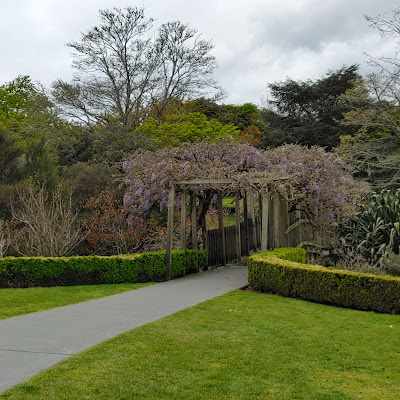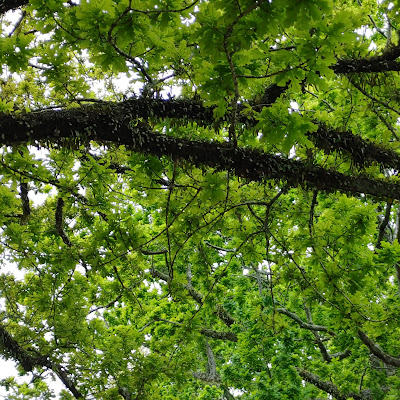 |
| Some of the median of Fenton Street in Rotorua was planted with tulips. There were areas with lots of different colors. |
 |
| Kuirau doesn't have any geysers, but it has plenty of hot pools and mud pots. |
 |
| This hot pool looks a little muddy. |
 |
| We did see areas that had temporary fencing around them. They were new thermal areas. |
 |
| This little bird posed for a photo but I don't know what it is. |
 |
| Pretty flower-covered bridge. Might be honeysuckle. |
 |
| Sign in the sidewalk. |
 |
| Time to go through the bridge. |
 |
| City police vehicle parked alongside the park. |
 |
| They had nice, hot foot baths but the seats were wet, and we hadn't brought our towels. It was cool out and we were wearing coats so sticking our feet in would have probably felt nice. |
 |
| scented garden |
 |
| Mud pot. |
 |
| All I found about this sculpture is that it was put up in 1966. |
 |
| Look at that beautiful rhododendron |
 |
| Kuirau Lake is the largest body of water in the park and it was producing so much steam that we couldn't even get a photo of it. This boiling stream ran out of it. |
 |
| Check out the following video to see how fast the stream was moving. |
 |
| This layer of foam had built up where the stream ran into a place with standing water. |
 |
| There was a playground in the park, and they had a couple different types of equipment that I had never seen before. |
 |
| Wished I knew what this plant was called. |
 |
| Right next to it was a bush with white flowers of the same type. |
 |
| That evening we heard about a street called Eat Street. It was an alleyway full of eating establishments. |
 |
| My sister decided to try their beer sampler. She thought they might be small, 5 oz glasses of each of the bees she selected. You can see they were much bigger. I think she drank three of them. |
 |
| I had chicken pasta with some wonderful maple-glazed carrots. |








































No comments:
Post a Comment